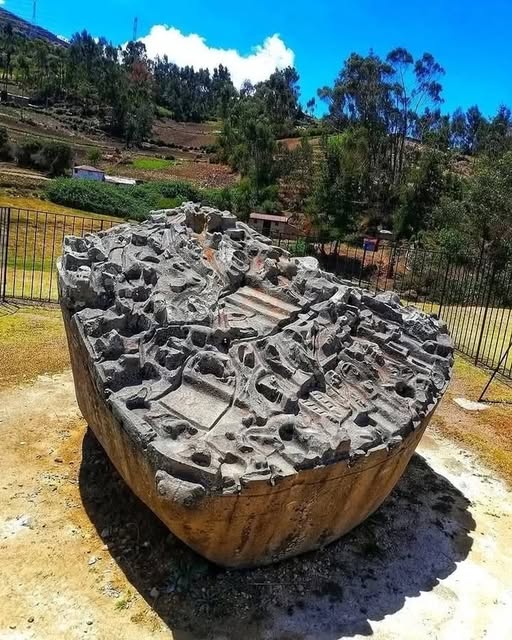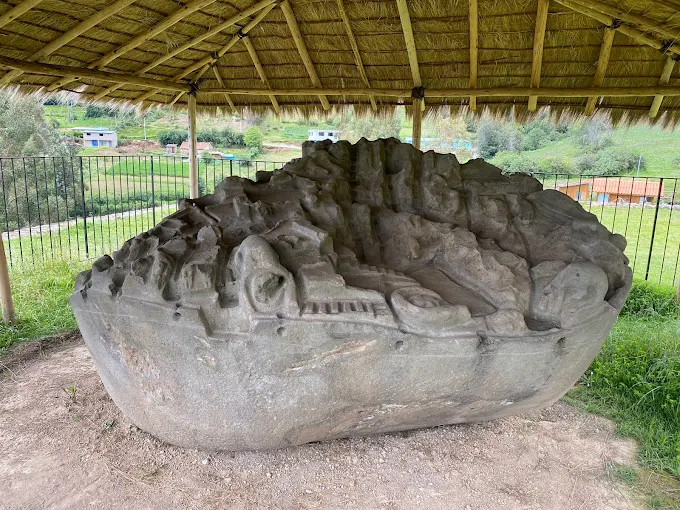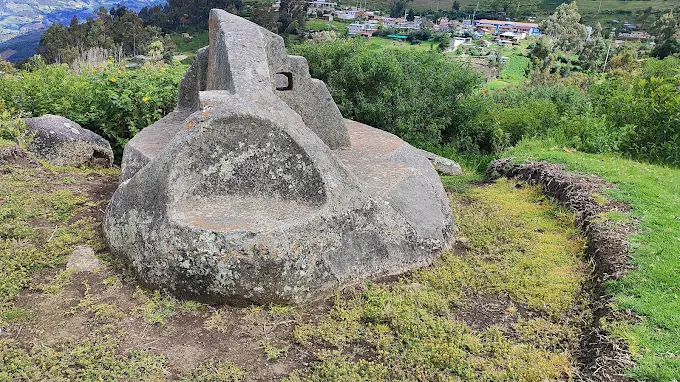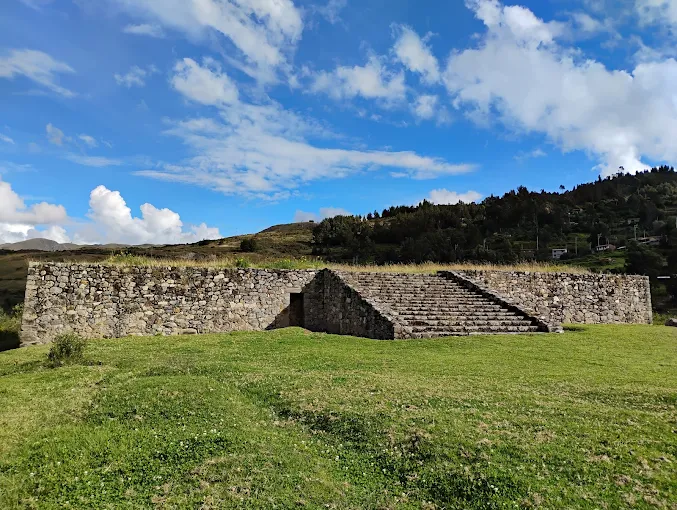Perched atop Concacha Hill in Peru, the Saywite Stone stands as a captivating relic of ancient ingenuity, offering a glimpse into the sophisticated world of pre-Columbian Andean civilizations. This massive granite monolith, measuring roughly two by four meters, is far more than a work of art—its intricate carvings suggest it was a dynamic tool for studying water management, a critical aspect of survival in the Andean highlands.

A Masterpiece of Design and Function
The Saywite Stone is renowned for its elaborate carvings, which cover its top surface with a stunning array of geometric and zoomorphic designs. Reptiles, frogs, and felines are etched alongside miniature terraces, ponds, rivers, tunnels, and irrigation canals. These reliefs are not merely decorative; many archaeologists believe they form a hydraulic topographic model, a testament to the Andean people’s advanced understanding of water dynamics.

This intricate network of channels likely served as a testing ground for water flow and distribution. By pouring water over the stone and observing how it moved through the carved structures, ancient engineers could simulate and refine large-scale irrigation systems. These systems were vital for supporting agriculture and urban life in the rugged Andean terrain, where water was both scarce and essential.
A Dynamic Tool for Innovation
What sets the Saywite Stone apart is its evidence of adaptability. The carvings show signs of multiple remodels—elements were added, removed, or altered to redirect water flow. This suggests the stone was not a static artifact but a living tool, used for experimentation and instruction. Such modifications highlight the Andean people’s commitment to innovation, as they continually refined their hydraulic designs to meet the needs of their communities.

The stone’s versatility underscores the sophistication of ancient Andean engineering. Long before modern tools, these technicians used the Saywite Stone to plan and perfect water management systems, ensuring the sustainability of their agriculture and settlements.
A Window into Andean Civilization
The Saywite Stone, believed to date back to the Inca period (circa 13th–16th centuries), is a powerful reminder of the advanced knowledge possessed by pre-Columbian cultures. Its carvings reflect not only technical expertise but also a deep connection to the natural world, with zoomorphic figures symbolizing the integration of nature and human ingenuity. The stone’s dual role as both a functional model and a cultural artifact speaks to the holistic worldview of the Andean people.

Today, the Saywite Stone is the centerpiece of the Saywite archaeological site, drawing visitors from across the globe. Tourists marvel at its complexity, from the precision of its carvings to the ingenuity of its purpose. The stone stands as a testament to the resilience and creativity of ancient civilizations, whose innovations continue to inspire awe.
A Legacy of Ingenuity

The Saywite Stone is more than a historical curiosity—it’s a monument to human ingenuity and adaptability. Its intricate design and practical purpose reveal the remarkable skills of the Andean people, who mastered their environment through careful observation and experimentation. As you stand before this granite marvel, you can’t help but feel a connection to the engineers and artisans who, centuries ago, shaped their world with precision and vision.
Have you visited the Saywite Stone or other ancient engineering marvels? Share your thoughts and experiences in the comments below!


